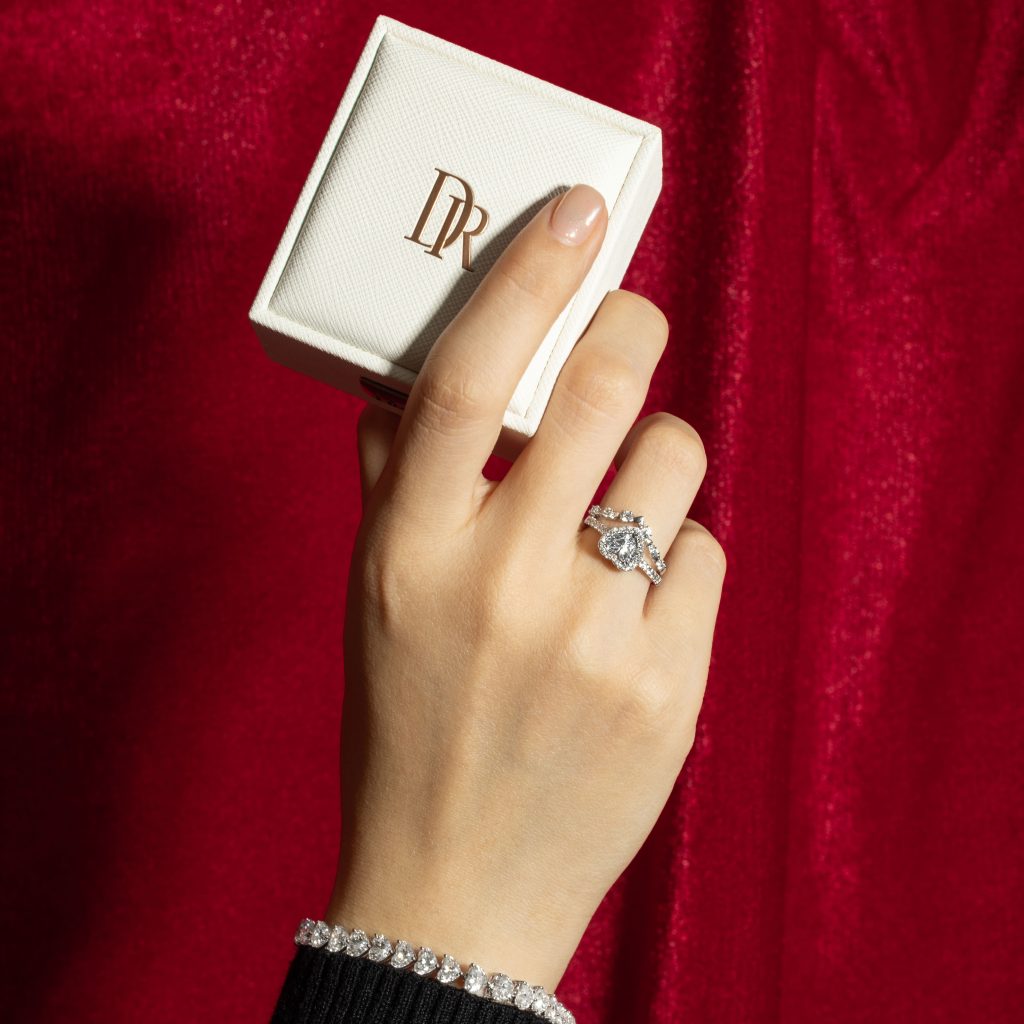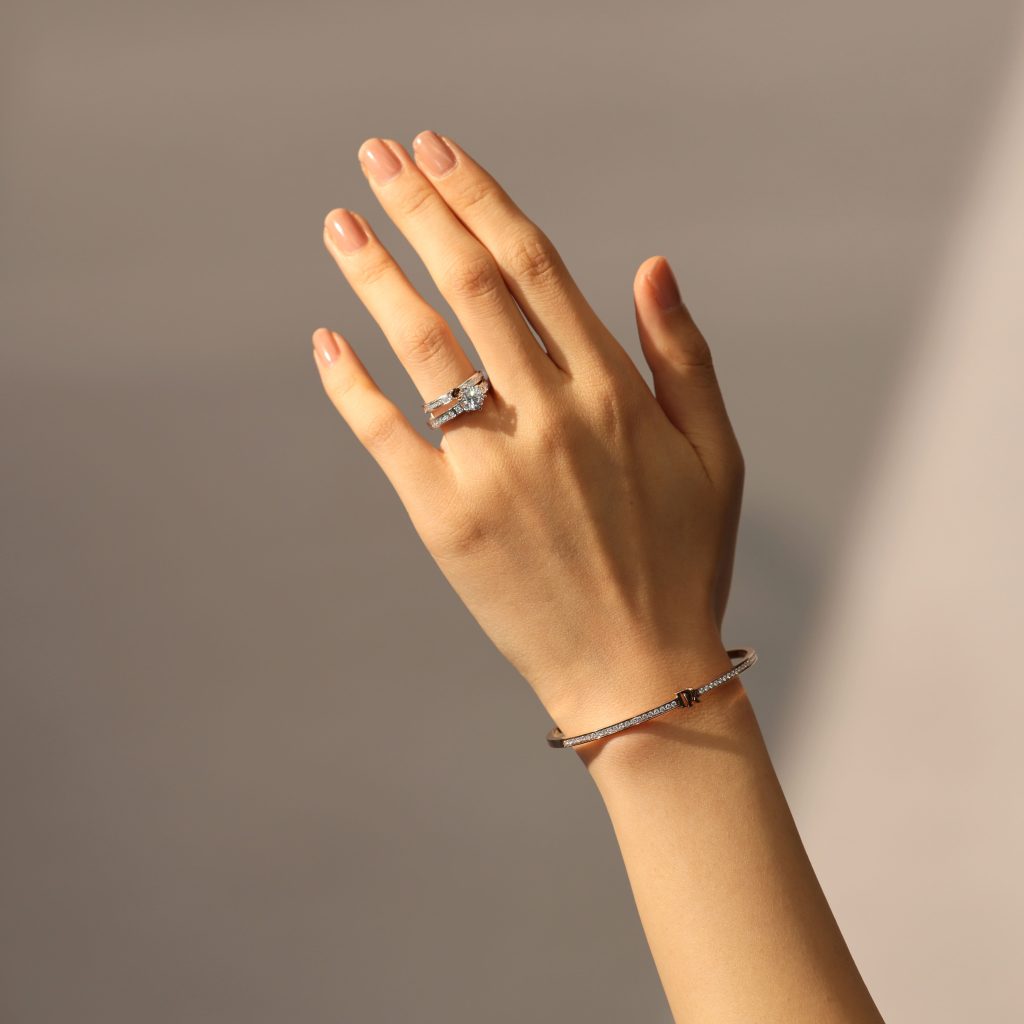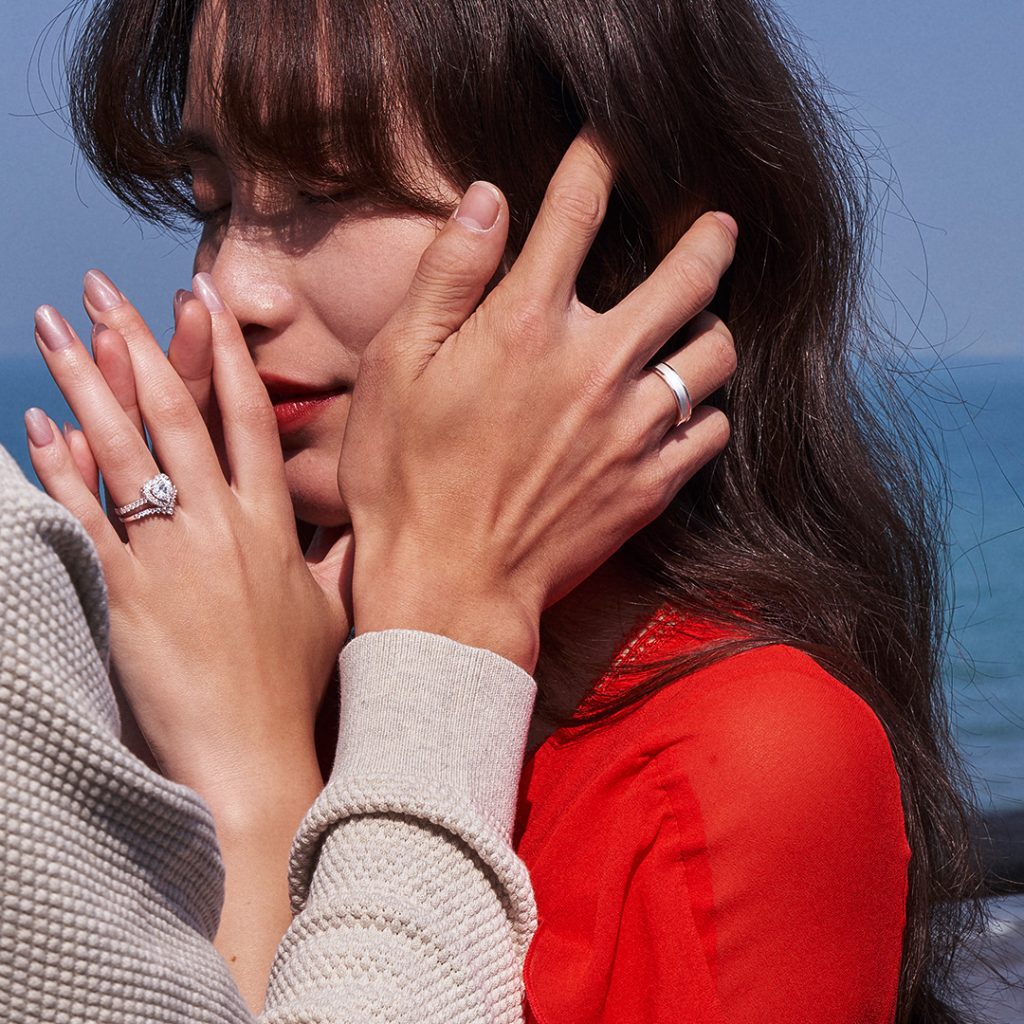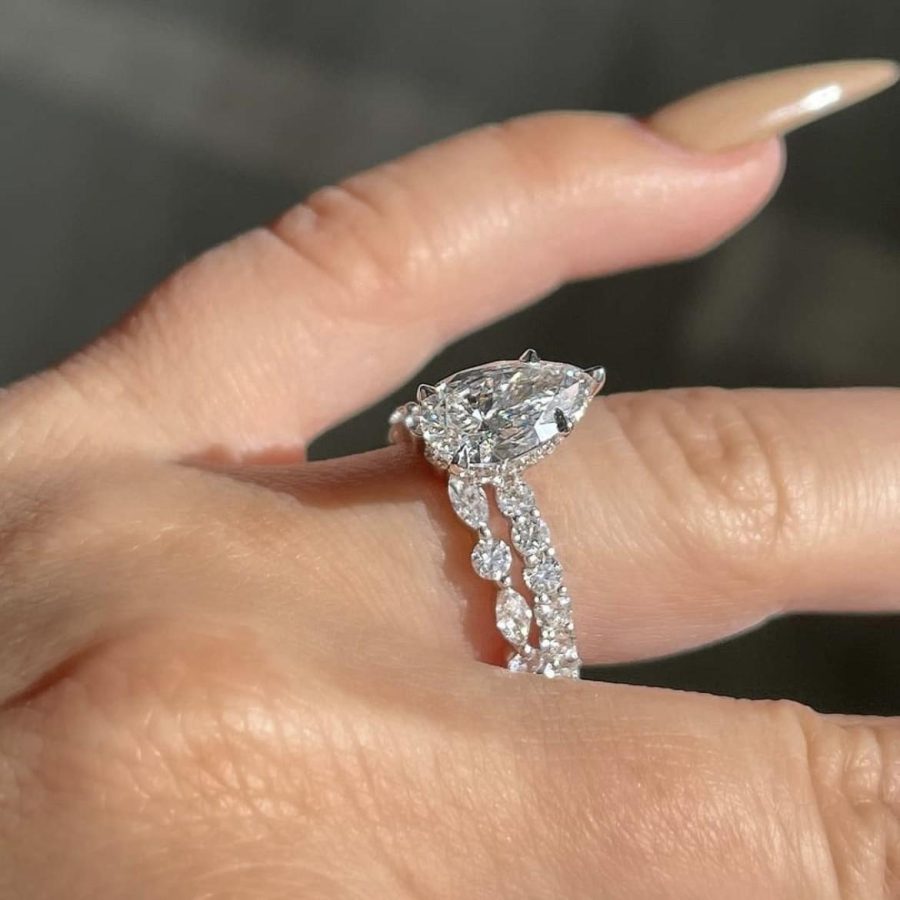Introduction
When it comes to wearing engagement and wedding rings, many people wonder about the correct order and placement. This decision often combines tradition, personal preference, and practical considerations. Understanding the rationale behind the order can help you make an informed choice that feels right for you and your partner.
Engagement Ring:
An engagement ring traditionally marks the promise of marriage. It is usually presented during a proposal and signifies the couple’s intention to wed. The most iconic feature of an engagement ring is typically a center diamond or gemstone, surrounded by smaller stones or a simple band, symbolizing love, commitment, and the beginning of a new chapter.
Wedding Ring:
The wedding ring, also known as the wedding band, is exchanged during the wedding ceremony. Its circular shape represents eternity and unbroken love, with no beginning and no end. Wedding bands are often simpler in design, emphasizing the unity and equality of the partnership. They can be plain metal bands or adorned with diamonds or other gemstones to match the engagement ring.
Placement: Engagement Ring on Top or Wedding Band?
Traditionally, the engagement ring is worn on the fourth finger (ring finger) of the left hand, as it was believed by ancient Romans that this finger had a vein leading directly to the heart, known as the “vena amoris” or the vein of love. Upon getting married, the wedding band is placed on the same finger, but there are two common practices regarding their order:
- Wedding Band First, Then Engagement Ring: In many cultures, the wedding band is placed closest to the heart, followed by the engagement ring on top. This signifies that the bond of marriage takes precedence over the promise of marriage represented by the engagement ring. It’s a beautiful way to emphasize the sacredness of the wedding vows.
- Engagement Ring First, Wedding Band Second: Some prefer to wear the engagement ring first, followed by the wedding band. This approach highlights the individuality and sentimental value of the engagement ring while still respecting the importance of the wedding band. It’s particularly popular when the two rings are designed to fit together seamlessly.
Practical Considerations
- Comfort and Fit: If your engagement ring has an elaborate setting or a large stone, wearing the wedding band first might provide a more comfortable fit, preventing the rings from rubbing against each other and potentially damaging the delicate details.
- Design Compatibility: If the engagement ring and wedding band are designed to interlock or have matching engravings, placing the wedding band beneath the engagement ring ensures their intended design is showcased.
-
Personal Preference: Ultimately, how you choose to wear your rings comes down to personal preference and comfort. There’s no right or wrong way, and some couples even opt to wear their rings on different fingers or alternate between the two styles.
Wearing Both Rings: Sequence and Practicality
After the wedding, the question arises of how to wear both rings together. There are a few common practices:
- Stacking: Many people choose to wear their wedding band directly next to the engagement ring on the same finger. This is a popular choice, creating a visually appealing stack that represents the different stages of their relationship. The wedding band is usually placed closer to the heart, with the engagement ring on top.
- Separate Fingers: Some individuals prefer to wear their wedding band on the traditional fourth finger of the left hand and move the engagement ring to the third finger of the same hand. This approach separates the two symbols but keeps them both visible.
- Switching Hands: In some cultures, it’s customary to wear the engagement ring on the right hand before the wedding and then switch it to the left hand after the wedding, placing the wedding band on the finger first.

The Tradition: Engagement Ring First
Traditionally, the engagement ring is worn on the left ring finger, and the wedding ring is placed on the same finger, but typically underneath the engagement ring. This order is rooted in historical customs and symbolic meanings:
a. Historical Significance
Historically, the engagement ring represents the promise and commitment leading up to the marriage. The wedding ring, on the other hand, symbolizes the official union and lifelong commitment that follows. Placing the wedding ring closest to the heart (i.e., on the innermost part of the finger) is seen as a way to keep the symbol of marriage closest to the heart, which represents a deeper, ongoing commitment.
b. Practical Considerations
The engagement ring often has a larger or more elaborate design compared to the wedding ring. Wearing the engagement ring on top can protect it from damage, as the wedding ring, which is typically simpler and less ornate, can act as a buffer. This can help prevent scratches and potential damage to the more delicate parts of the engagement ring.
Modern Variations and Personal Preferences
While tradition often dictates the engagement ring goes first, modern practices and personal preferences can vary. Some people choose to wear their rings in different orders based on their lifestyle, aesthetic preferences, or cultural practices:
a. Customization and Style
- Stacked Look: Some individuals prefer to stack their rings in a way that is visually appealing or meaningful to them. This might involve wearing the engagement ring on top if it has a prominent design that they want to showcase.
- Unique Designs: If the wedding ring has a unique design or a specific purpose, such as a ring with sentimental engravings, some might choose to wear it on top so that it remains the focal point.
b. Lifestyle Considerations
- Comfort: For some, wearing the wedding ring on top might be more comfortable, especially if the engagement ring is bulky or has settings that could catch on things.
- Occupation: Individuals with active lifestyles or jobs that involve manual labor might find it more practical to wear the wedding ring on top to minimize wear and tear on the engagement ring.
Alternative Ring Fingers
In some cultures or personal practices, people may choose to wear their rings on different fingers:
a. Right Hand: In certain traditions, especially in European countries, engagement and wedding rings are worn on the right hand. This is often based on cultural norms or personal preferences.
b. Different Fingers: Some people opt to wear their engagement and wedding rings on different fingers for comfort or style reasons. This might be less traditional but can be a personal choice.
Caring for Your Rings
Regardless of the order in which you wear them, proper care is essential to keep your rings looking their best:
a. Regular Cleaning: Clean your rings regularly to remove dirt and oils that can dull their shine. Use a mild soap solution and a soft brush or cloth.
b. Professional Maintenance: Have your rings checked by a jeweler periodically to ensure that settings are secure and that the rings are in good condition.
c. Safe Storage: When not wearing your rings, store them in a jewelry box or a safe place to protect them from scratches or damage.
 Conclusion
Conclusion
While the traditional order places the engagement ring on top of the wedding ring, the choice ultimately comes down to personal preference and lifestyle considerations. Whether you follow tradition or opt for a more personalized approach, the most important aspect is that your rings reflect your unique relationship and commitment. Embrace the symbolism and beauty of both rings, and wear them in a way that feels right for you.
